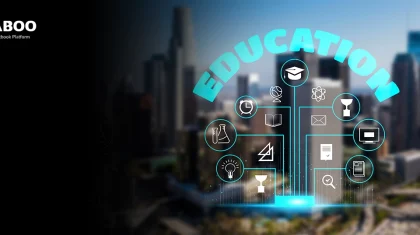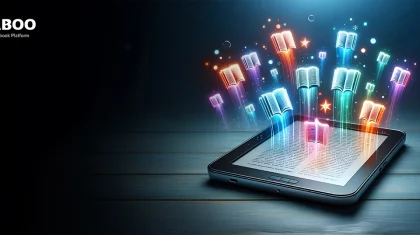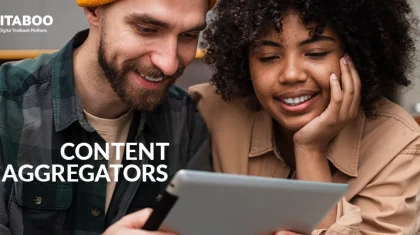
Accessibility in Reading: How eBook Readers Are Empowering Readers with Disabilities
Summarize this blog with your favorite AI:
One of the biggest advantages of the increased use of technology in teaching in the higher education space is that it has democratized access to information. Traditional rote learning, while effective in its own ways, proved to be a major barrier to those with cognitive or visual disabilities, among several others.
Access to Braille was limited, leaving a huge segment of students out of the picture. However, the introduction of digital content that’s dispersed via eBook readers has shifted the focus to accessibility in several key ways.
In this guide, we explore how eBook readers are empowering readers with disabilities, particularly at the K12 and higher education levels.
Table of Contents
I. The Benefits of eBook Readers with Respect to Increased Accessibility
- Customizable Font Sizes and Styles
- Text-to-Speech for the Visually Impaired
- Alternative Texts for Images
- Subtitles and Captions
- Hands-Free Controls
The Benefits of eBook Readers with Respect to Increased Accessibility
The American College Health Association, in a survey of 54,204 undergraduates conducted in 2022, found that 15% of students reported having ADD or ADHD, 4% were blind or had poor vision, 2% had difficulties hearing or were deaf, and 4.7% had a learning disability of some kind, apart from several other key findings.
Given that the overall enrollment in undergraduate degrees in the US for the academic year 2022-2023 stood at 20.3 million, the percentages mentioned above paint a stark picture – students have real problems that limit their access to knowledge and information.
The era of the eBook has aimed to cater to this large segment in several different ways.
In this section, we explore some of the many ways in which eBook readers are empowering students and readers with disabilities.
1. Customizable Font Sizes and Styles
Anyone who’s used Microsoft Word or Google Docs knows how helpful it can be to adjust the font style and size based on your convenience. It can make the text easier to read and understand, particularly for those who struggle to read smaller fonts and reduce the strain on the eyes.
One of the most fundamental features of any good eBook reader is the ability to change the font style and size. This feature offers immense benefits to those with poor vision, as it allows them to adjust the text to a size and style that’s easier to read and understand.
What’s more, eBook readers with the ability to switch to high-contrast text further add to the accessibility of content, making it easier for those with poor vision to absorb information. One such example of digital textbook platforms that allow for such customizability is KITABOO.
The ability to personalize and customize the reading experience is a huge selling point for electronic book reader apps in today’s competitive market.

2. Text-to-Speech for the Visually Impaired
Another key feature that a good eBook reader or digital textbook platform or app offers is that of text-to-speech. This feature can be a game-changer, converting written content into an audible narrative that those who are completely visually impaired can benefit from.
It ensures blind users don’t miss out on content, as they can use this feature to have the material read out to them. What’s more, the best eBook readers also allow users to adjust the pace at which the content is read to them, adding to its accessibility and convenience.
3. Alternative Texts for Images
While alt texts for images are often discussed when discussing Search Engine Optimization (SEO), they also play a key role in improving accessibility to digital content. Digital content today is visual-heavy, with images, videos, and other graphic elements playing a key role. However, for those with visual impairments, these visuals are of little benefit.
However, with the use of alt text, these visual elements can be better described to those with visual impairments of any kind. Alt texts serve two purposes: they inform search engine crawlers what an image is about, allowing for better indexing and ranking, and they help when combined with text-to-speech functionalities.
A user relying on text-to-speech to absorb written content benefits from the use of alt text as the feature also reads out these descriptions of images, allowing the user to understand what the image intends to convey.
4. Subtitles and Captions
Aside from those with cognitive and visual impairments, eBook readers today also cater to students and readers with hearing impairments. While these individuals can read content, absorbing auditory elements remains a challenge.
However, with features like adding closed captions or subtitles to all audio-visual content, digital publishers can ensure that multimedia content becomes accessible to all. Providing transcripts and captions also helps those with other auditory impairments, such as auditory processing disorder, or those with sensorineural or conductive hearing loss.
5. Hands-Free Controls
Physical limitations or bodily impairments are also major barriers that can prevent students and readers from accessing content in books or eBooks. These limitations can occur as a result of conditions like dyspraxia or even amputations. Regardless of the conditions at play, their resulting physical limitations can affect one’s ability to access content.
However, publishers have been able to cater to this vast segment of individuals with hands-free controls that allow users to use voice commands to turn pages, open files, and so on. Further, eBook readers are portable, light, and easier to use than a collection of physical books. This quality significantly increases accessibility to learning materials for students with motor impairments.
Conclusion
The features mentioned in this guide create an atmosphere of equity in the higher education space, offering the same high-quality content to individuals regardless of their disabilities. From the inclusion of customizable font sizes and styles, high-contrast text, text-to-speech, alt texts, hands-free controls, and so much more, higher education institutions can truly create a more equitable learning atmosphere for every student.
If you’re looking for a digital textbook platform that meets the highest global accessibility standards, you must consider KITABOO. It offers WCAG and ADA compliance, along with a host of features that make learning engaging and equitable.
To know more, contact us today!
Discover how a mobile-first training platform can help your organization.
KITABOO is a cloud-based platform to create, deliver & track mobile-first interactive training content.


